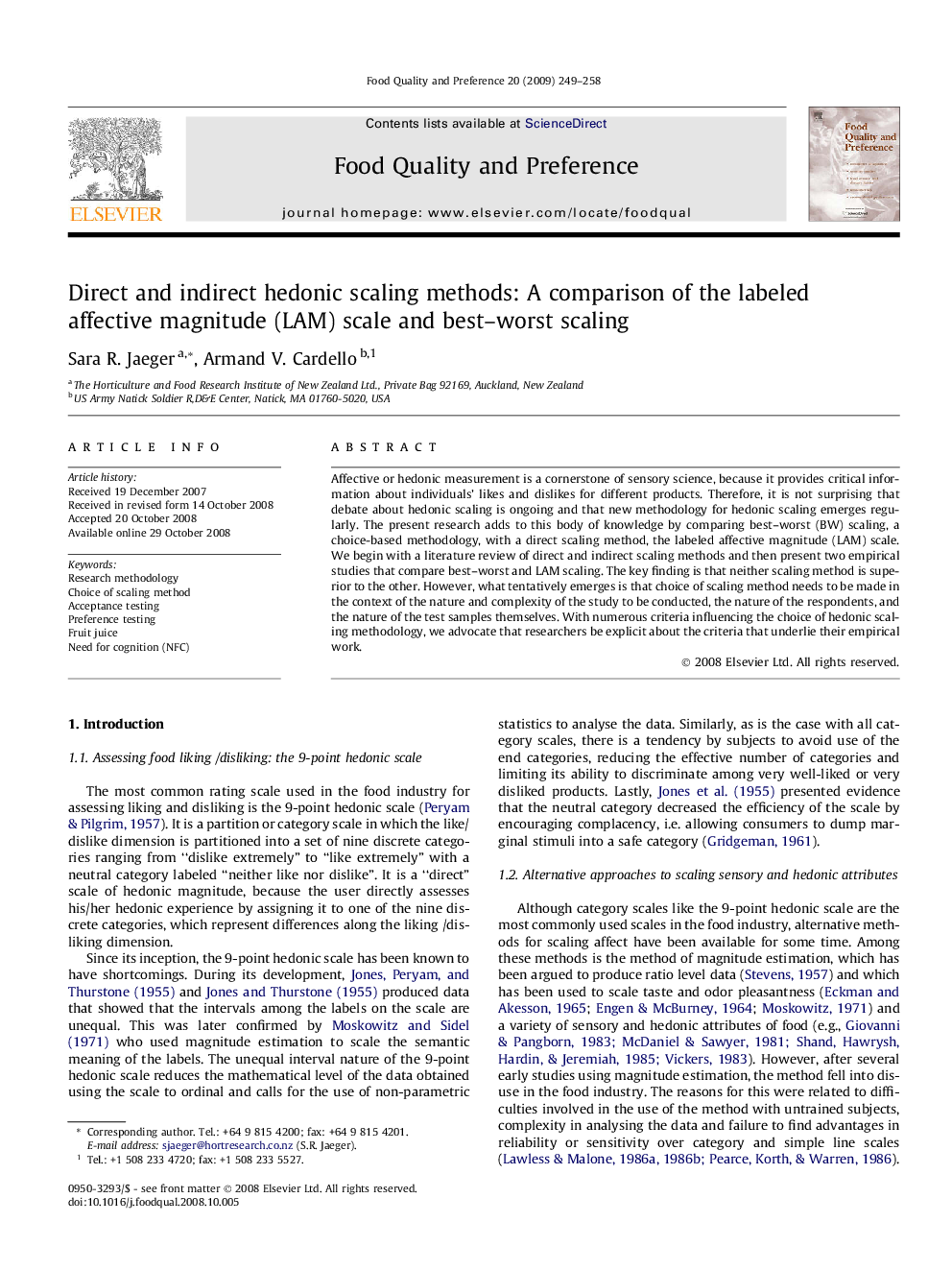| Article ID | Journal | Published Year | Pages | File Type |
|---|---|---|---|---|
| 4317954 | Food Quality and Preference | 2009 | 10 Pages |
Affective or hedonic measurement is a cornerstone of sensory science, because it provides critical information about individuals’ likes and dislikes for different products. Therefore, it is not surprising that debate about hedonic scaling is ongoing and that new methodology for hedonic scaling emerges regularly. The present research adds to this body of knowledge by comparing best–worst (BW) scaling, a choice-based methodology, with a direct scaling method, the labeled affective magnitude (LAM) scale. We begin with a literature review of direct and indirect scaling methods and then present two empirical studies that compare best–worst and LAM scaling. The key finding is that neither scaling method is superior to the other. However, what tentatively emerges is that choice of scaling method needs to be made in the context of the nature and complexity of the study to be conducted, the nature of the respondents, and the nature of the test samples themselves. With numerous criteria influencing the choice of hedonic scaling methodology, we advocate that researchers be explicit about the criteria that underlie their empirical work.
